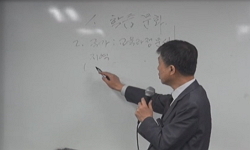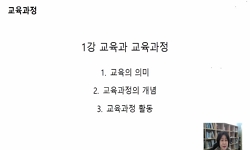본고는 교육과정에 기술된 술목 관계의 문제점을 ‘有/無` 서술어 중심으로 살펴보고, 교육과정 상의 술목 관계 설정과 그간 논란이 되었던 예시문 들에 대한 타당성 여부를 타동성(Transitivit...
http://chineseinput.net/에서 pinyin(병음)방식으로 중국어를 변환할 수 있습니다.
변환된 중국어를 복사하여 사용하시면 됩니다.
- 中文 을 입력하시려면 zhongwen을 입력하시고 space를누르시면됩니다.
- 北京 을 입력하시려면 beijing을 입력하시고 space를 누르시면 됩니다.

2015 개정 한문과 교육과정에 기술된 ‘유(有)/무(無) + 목적어`의 문제점과 개선 방안 -타동성의 관점에서 본 ‘유(有)/무(無) + 목적어`- = Problems of ‘有/無 + object` described in the 2015 Revised Curriculum for Classical Chinese Department, and Improvement Plan thereof -‘有/無 + object` seen from the perspective of Transitivity-
한글로보기https://www.riss.kr/link?id=A102167483
- 저자
- 발행기관
- 학술지명
- 권호사항
-
발행연도
2016
-
작성언어
Korean
-
주제어
교육과정 ; 술목 관계 ; 유(有)/무(無) 서술어 ; 목적어 ; 타동성 ; Curriculum ; Predicate-Object Relation ; ‘有/無` Predicate ; Object ; Transitivity
-
등재정보
KCI등재
-
자료형태
학술저널
-
수록면
193-226(34쪽)
- DOI식별코드
- 제공처
-
0
상세조회 -
0
다운로드
부가정보
국문 초록 (Abstract)
본고는 교육과정에 기술된 술목 관계의 문제점을 ‘有/無` 서술어 중심으로 살펴보고, 교육과정 상의 술목 관계 설정과 그간 논란이 되었던 예시문 들에 대한 타당성 여부를 타동성(Transitivity)을 바탕으로 검토하였다. 문장성분으로서 목적어를 구분할 때 타동성과 논항의 의미역을 살펴보는 것이 중요하다. 목적어는 타동성이 있는 서술어의 지배(government)를 받을 때 그 타당성을 높게 인정받을 수 있으며, 그에 따른 목적어 범위가 정해지기 때문이다. 일반적으로 타동성(Transitivity)은 비대칭적 관계의 두 참여항과 관련된 것으로, 서술어가 나타내는 행위나 상태의 영향이 한 참여항으로부터 다른 참여항으로 옮겨지는(transferred) 통사 의미적 관계를 뜻한다. 이러한 타동성을 검증하는 방법으로 대표적인 것이 Hopper & Thompson(1980)의 타동성 분석인데, 이를 바탕으로 본고에서는 한문의 타동성을 파악하는 데 있어 참여항(Participants), 동작성(Kinesis), 행위자성(Agency), O의 피영향성(O-affectedness)의 4가지 자질을 선정하였다. 그리고 이를 통해 所有의 ‘有/無` 서술어를 분석했을 때, 다음과 같은 결론을 얻을 수 있었다. 첫째 행위자성(Agency) 측면에서 所有의 ‘有/無` 서술어 앞에 위치한 유정명사구는 대상에 영향을 미칠 수 있는 행위주로서 기능하지 못한다. 둘째 동작성(Kinesis) 측면에서 所有의 ‘有/無` 서술어는 ‘所有의 행위`를 나타내는 것이 아니라, ‘所有의 상태`를 나타낸다. 셋째 O의 피영향성(O-affectedness) 측면에서 所有의 ‘有/無` 서술어 뒤에 이어지는 명사성 성분은 ‘행위자의 영향력`이 미치는 대상이 아니라 주어의 상태를 설명하기 위한 보조 수단으로서의 대상이다. 결론적으로‘有/無`서술어는 목적어를 필요로하는 타동성을 지닌 일반적인 서술어와 그 성격이 전혀 다르다. 결론적으로 필자는 교육과정 상의 서술어와 그 뒤에 이어지는 성분의 의미 관계를 타동성의 관점에서 바라보고, 所有의 ‘有/無`를 삭제할 것을 제안한다. 아울러 所有의 ‘有/無`서술어는 교육과정상 술보관계의 개념에 부합하므로 따로 기술할 필요가 없다는 점을 밝힌다. 교육과정의 학교 문법은 교수 학습 내용 구성에 있어 중요한 토대가 된다. 학교 현장에서 교사와 학생들에게 많은 혼란을 주는 부분에 대한 명확한 정리가 교육과정 상에 반영되어야 할 것이다.
다국어 초록 (Multilingual Abstract)
This paper looked into the problem in the predicate-object relation described in the curriculum with focus on ‘有/無 predicate`, and examined the ‘predicate-object relation` setting according to the curriculum, and validity status as to the hith...
This paper looked into the problem in the predicate-object relation described in the curriculum with focus on ‘有/無 predicate`, and examined the ‘predicate-object relation` setting according to the curriculum, and validity status as to the hitherto controversial sample sentences on the basis of Transitivity. It`s important to look into the transitivity, and the semantic role of an argument when classifying an object as sentence component. It`s because an object can be highly acknowledged for its validity when it is governed by a predicate having transitivity, and the consequential scope of an object is set. Generally, Transitivity has something to do with the two participants in an asymmetrical relation, referring to the syntactic semantics relation, in which the influence of the action, or state indicated by a predicate is transferred to the other participant from one participants. The representative method of verifying such Transitivity is Hopper & Thompson(1980)`s Transitivity Analysis, on the basis of which this paper selected four sorts of qualities, i.e. Participants, Kinesis, Agency and O-affectedness in grasping the Transitivity of Chinese classics. In addition, this paper could draw a conclusion as follows only after the analysis of the ‘有/無` predicate of possession through the above four qualities. First, from the Agency aspect, the animate noun phrase placed before ‘有/無` predicate of possession fails to function as an Agent which can have an influence on an object. Second, from the Kinesis aspect, the ‘有/無` predicate of possession indicates not ‘an action of possession` but ‘a state of possession.` Third, from the O-affectedness aspect, the nounal constituent following the ‘有/無` predicate of possession is not an object, to which a doer`s influence is projected but an object as a means of assistance for explaining the state of a subject. Conclusively, ‘有/無` predicate doesn`t have Transitivity, through which the influence of an action, or a state is transferred to an object i.e. a Theme from an Agent; therefore, it should be distinguished from a general predicate in need of an object. In conclusion, this writer sees the semantic relation between the predicate and its subsequent constituent specified in the curriculum from the perspective of Transitivity, and proposes that ‘presence/non-presence` of possession should be deleted. Also, this writer makes it clear that there is no need to describe the ‘presence/non-presence` predicate of possession separately because it matches up with the concept of the predicate-complement relation for the sake of the curriculum. The purpose of school grammar is to get students to understand a sentence in Chinese characters easily and clearly. Hereupon, this writer proposes that it might be necessary to reflect the clear arrangement of the part, which is very confusing for teachers and students at a school field, in the curriculum.
동일학술지(권/호) 다른 논문
-
- 근역한문학회
- 김하라 ( Kim Ha-ra )
- 2016
- KCI등재
-
거듭나기 과정으로서의 질병 -한국한문학이 포착한 질병의 한 특징-
- 근역한문학회
- 이홍식 ( Lee Hong-shik )
- 2016
- KCI등재
-
- 근역한문학회
- 안득용 ( An Deuk-yong )
- 2016
- KCI등재
-
야은(冶隱) 길재(吉再)에 대(對)한 력대(歷代) 찬영시(讚詠詩) 검토(檢討)(Ⅲ) -숙종(肅宗) 어제시(御製詩) 및 갱진(?進)·차운시(次韻詩) 중심(中心)으로-
- 근역한문학회
- 남재철 ( Nam Jae-cheol )
- 2016
- KCI등재





 KCI
KCI KISS
KISS






